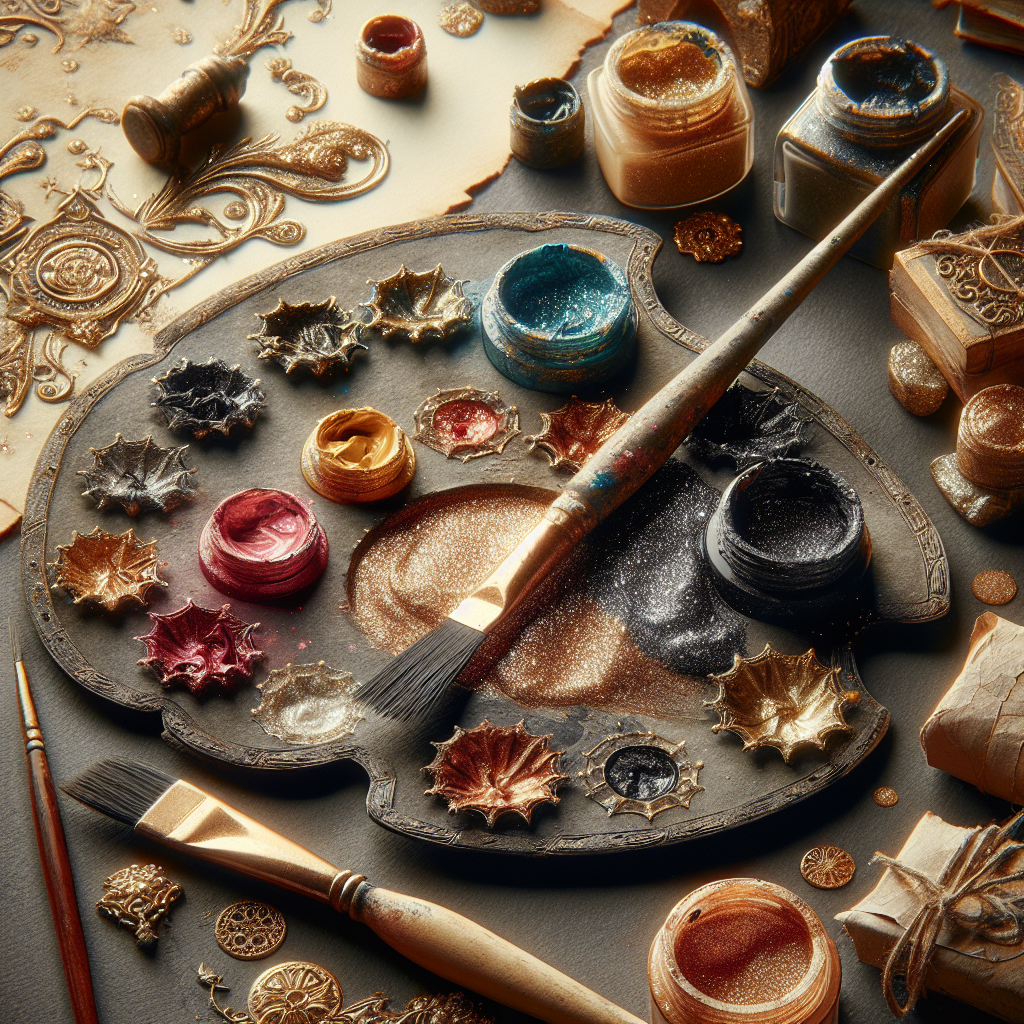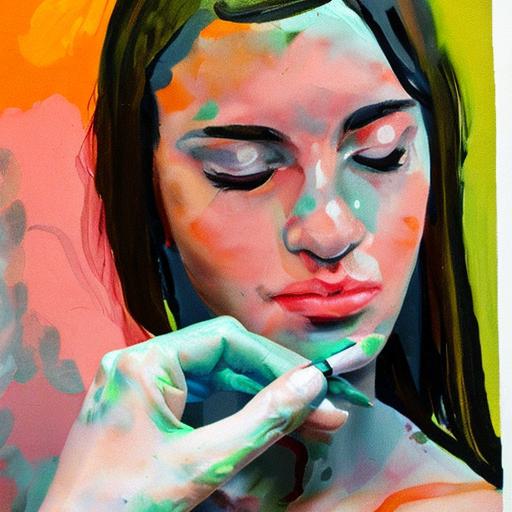Gouache paint, a versatile medium used by many artists, has a fascinating history that stretches back centuries. Developed as a popular artistic tool, gouache paint has found its place in both traditional and contemporary art forms due to its unique properties. From its humble origins in ancient Egypt, this article explores the intriguing timeline of when gouache paint was first invented, tracing its evolution through different cultures and periods of artistic expression. Gain insight into the origins and development of this captivating medium, and discover how its use has evolved over time. Whether you are an art enthusiast, a budding artist, or simply curious about the origins of this vibrant medium, this article will provide a comprehensive overview of the story behind gouache paint’s invention.
Origin of Gouache Paint
Gouache paint has a rich and fascinating history that dates back to ancient civilizations. This unique artistic medium has undergone various transformations and has been used by artists throughout the centuries for its vibrant colors and versatile application.
Early Beginnings in Ancient Egypt
The origins of gouache paint can be traced back to ancient Egypt, where it was used extensively in tombs and temples. The Egyptians discovered that by combining powdered pigments with a binding agent, they could create a paint that had a creamy consistency and vibrant hues. This early form of gouache was primarily used for decorative purposes, such as creating intricate murals and illuminating manuscripts.
Gouache in Ancient Greece and Rome
Gouache paint continued to evolve in ancient Greece and Rome, where it was known as “gouache encaustic.” The Greeks and Romans developed new techniques, such as mixing the pigments with wax or egg yolk to achieve a smoother texture and better adherence to various surfaces. These advancements allowed artists to create detailed and vibrant paintings that showcased the versatility of gouache.
Gouache in Medieval and Renaissance Periods
During the medieval and Renaissance periods, gouache paint gained popularity as a portable medium for manuscript illumination. The opaque nature of gouache made it ideal for creating intricate details and illuminating delicate manuscripts with gold accents. With its ability to create layered effects and its vibrant colors, gouache became an essential tool for artists during this time. Artists such as Leonardo da Vinci and Albrecht Dürer experimented with gouache techniques, demonstrating its versatility and significance in the art world.
Gouache Paint in the 18th Century
Introduction of Body Color Technique
In the 18th century, a new technique called the body color technique emerged, which further enhanced the qualities of gouache paint. This technique involved applying layers of opaque gouache paint over a watercolor base, creating a unique and luminous effect. The body color technique allowed artists to achieve rich, vibrant colors and a level of detail that was unmatched by other painting methods at the time.
Gouache’s Rising Popularity in Europe
During this century, gouache paint began to gain popularity in Europe, particularly in France. The versatility of gouache, combined with its ability to produce vibrant and highly opaque colors, made it a favored medium among artists. It was used for a wide range of subjects, including landscapes, portraits, and still life compositions. The rise of gouache in Europe laid the foundation for its continued use and development in the following centuries.
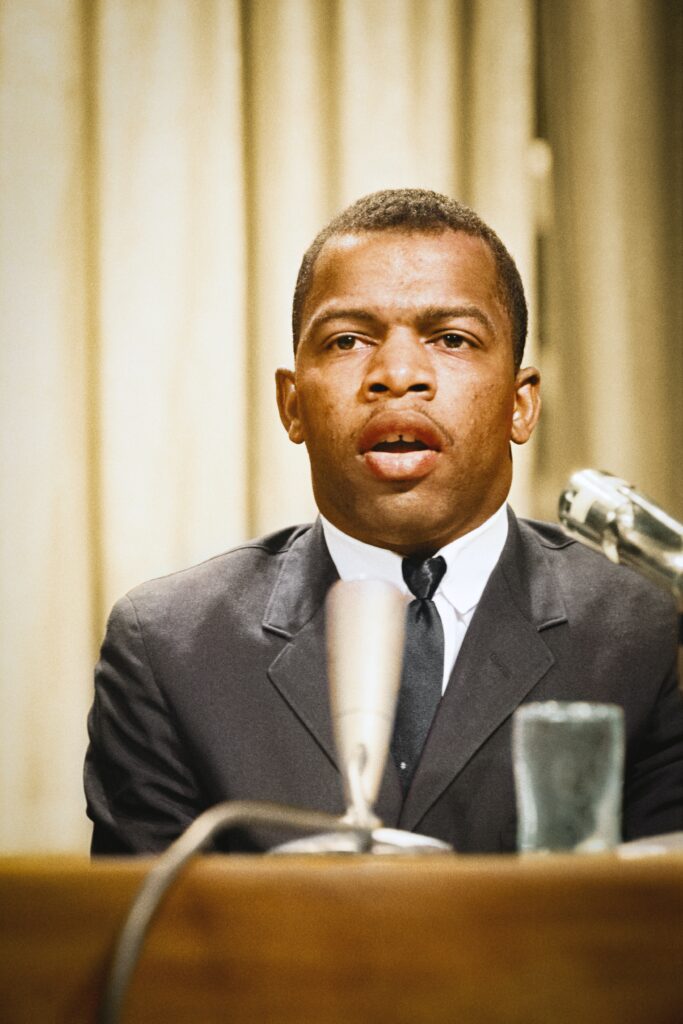
This image is property of images.unsplash.com.
Gouache Paint in the 19th Century
Gouache as an Essential Medium for Illustrations
In the 19th century, gouache paint became an essential medium for illustrations, particularly in the field of scientific and natural history illustration. The opaque nature of gouache allowed artists to depict fine details and accurately represent the colors and textures of various specimens. Gouache was also favored by illustrators for its ease of correction and the ability to layer colors to create depth and dimension.
Evolution of Gouache Techniques
During this period, artists continued to explore and experiment with different gouache techniques. The development of new pigments and the introduction of gum arabic as a binder allowed artists to achieve even greater levels of color intensity and permanence in their gouache paintings. Artists such as J.M.W. Turner and John Singer Sargent incorporated gouache into their works, showcasing its versatility in capturing light and atmosphere.
Gouache Paint in the 20th Century
Gouache in Modern Art Movements
In the 20th century, gouache paint became an integral part of various modern art movements. Artists associated with movements such as Fauvism and Expressionism embraced the bold and vibrant colors that gouache offered. The opaque nature of gouache also allowed artists to create flat areas of color, eliminating the need for shading or blending. This characteristic made it an ideal medium for artists seeking to challenge traditional techniques and explore new forms of expression.
Influential Artists and Their Use of Gouache
Several influential artists of the 20th century employed gouache in their artworks. Wassily Kandinsky, a key figure in abstract art, used gouache in his bold and geometric compositions. Paul Klee, known for his imaginative and whimsical paintings, often incorporated gouache to achieve intricate patterns and vibrant colors. The use of gouache by these prominent artists further established its significance in the art world and encouraged others to explore its capabilities.

This image is property of images.unsplash.com.
Gouache Paint Today
Contemporary Artists and Gouache
In contemporary art, gouache paint continues to be a popular choice among artists. Its vibrant colors and velvety texture make it a versatile medium for a wide range of artistic styles and subjects. Many contemporary artists appreciate gouache for its ability to be used both as an opaque paint and diluted as a transparent watercolor. This flexibility allows artists to explore different techniques and achieve various effects in their artworks.
Revival of Gouache in the Art Community
In recent years, there has been a resurgence of interest in gouache paint within the art community. Artists are rediscovering the unique qualities of gouache and incorporating it into their art practices. The resurgence can be attributed to the growing interest in traditional and handmade art mediums, as well as the desire for more tactile and expressive forms of art. Gouache’s ability to produce velvety matte finishes while retaining vibrant colors has made it a favorite among artists looking for a distinctive and nostalgic aesthetic.
Gouache vs. Other Painting Mediums
Comparison with Watercolor
While gouache and watercolor share some similarities, there are distinct differences between the two mediums. Gouache is more opaque than watercolor, allowing for a solid coverage and easy corrections. Watercolor, on the other hand, is more transparent and relies on the white of the paper for lightness. Gouache offers more control over color intensity and is suitable for highly detailed and precise artworks, whereas watercolor is often favored for its delicate and ethereal qualities.
Comparison with Acrylic Paint
Gouache and acrylic paint share similarities in terms of being water-based mediums. However, gouache dries to a matte finish, while acrylic paint dries to a glossy or semi-glossy finish. Gouache can be reactivated with water, even after drying, which allows for easy reworking and corrections. Acrylic paint, once dried, becomes permanent and cannot be reactivated. Gouache is also more suitable for achieving subtle color transitions and delicate layers, while acrylic paint is favored for its versatility and ability to be used on various surfaces.
Advantages and Disadvantages of Gouache
Gouache paint offers several advantages that make it a preferred medium for many artists. Its opaque nature provides excellent coverage, allowing artists to correct mistakes easily. It also allows for layering and building up vibrant colors. Gouache is easily rewettable, making it ideal for artists who prefer to work in a more spontaneous and improvisational manner. However, gouache does have some limitations. It can be more prone to cracking when applied thickly, and its matte finish may not appeal to artists who prefer a glossy or shiny appearance in their works.
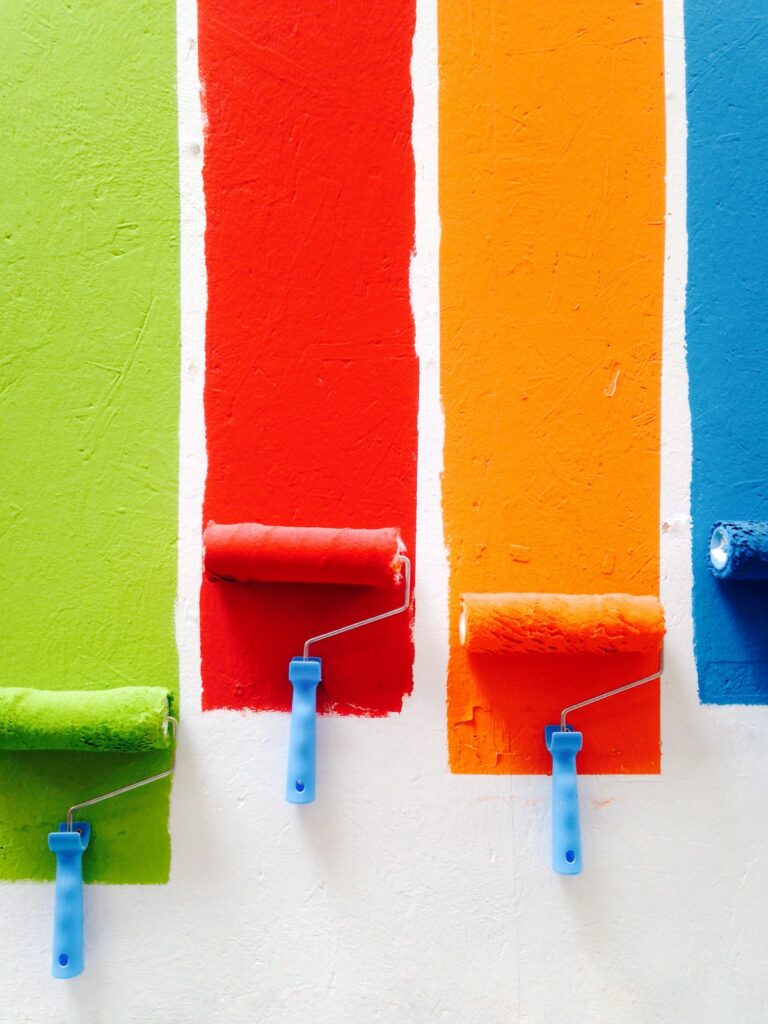
This image is property of images.unsplash.com.
How Gouache Paint Is Made
Ingredients and Pigments
Gouache paint is made from a mixture of pigments, a binder (usually gum arabic), and water. The pigments used in gouache are finely ground to achieve a smooth and consistent texture. Various pigments are available in a wide range of colors, giving artists ample options for creating vibrant artworks.
Production Process
The production of gouache paint involves combining the pigments, binder, and water in specific ratios. The mixture is then milled to ensure the pigments are thoroughly dispersed and to achieve the desired consistency. The resulting paste is then dried into solid cakes or tubes, ready for use by artists. Modern manufacturing processes have made gouache paint readily available in a convenient and portable form, allowing artists to easily incorporate this unique medium into their artistic practice.
Different Applications of Gouache Paint
Gouache in Fine Art and Illustration
Gouache paint finds its application in various forms of fine art, including painting, drawing, and mixed media artworks. Its versatility allows artists to create highly detailed and expressive pieces. Gouache is also a favorite medium among illustrators, as it provides excellent coverage and the ability to layer colors for depth and texture. Illustrations created with gouache have a distinct and timeless quality that is highly sought after in the publishing industry.
Gouache in Graphic Design
Gouache paint is widely used in graphic design for its vibrant colors and ability to create crisp and clean lines. It is often utilized in poster design, packaging, and advertising materials. The matte finish of gouache also adds a unique visual appeal to graphic design artworks, creating a distinctive and eye-catching aesthetic.
Gouache in Craft and Decorative Arts
Gouache paint is a popular choice for craft and decorative arts due to its versatility and ease of use. It can be applied to a wide range of surfaces, such as wood, fabric, and ceramics. Gouache is often used for creating decorative objects, such as hand-painted ceramics, ornaments, and greeting cards. Its opaque nature allows for intricate designs and vibrant colors that enhance the overall visual impact of the crafted pieces.
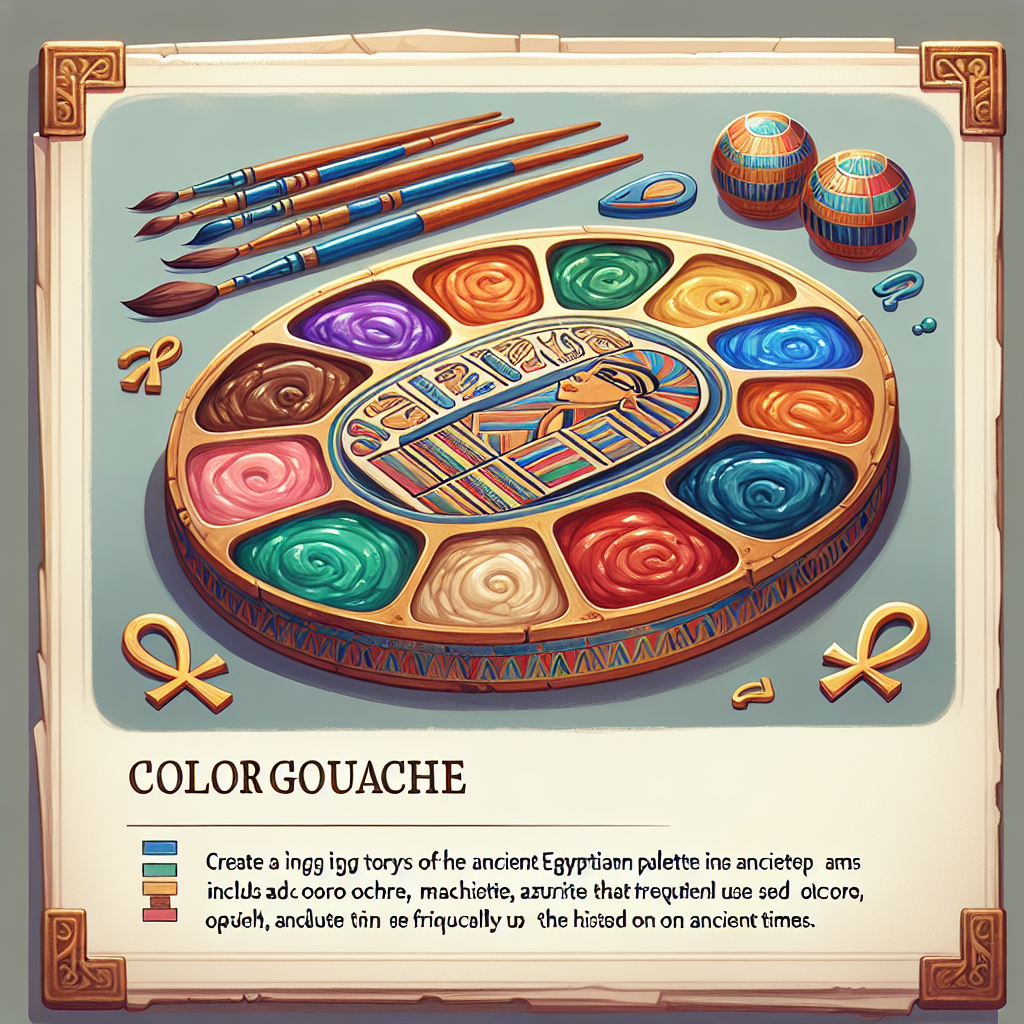
Tips for Using Gouache Paint
Preparing Your Workspace
Before starting a gouache painting, it is essential to prepare your workspace properly. Ensure you have a clean and well-lit area to work in, as gouache requires precision and accurate color mixing. Use high-quality brushes and palettes suitable for gouache paint to achieve optimal results. Prepare your water containers to keep your brushes clean and the paint at the right consistency.
Layering and Mixing Colors
Layering and mixing colors are vital aspects of working with gouache. Gouache allows for both transparent and opaque applications, making it suitable for subtle color transitions and building up layers of vibrancy. Experiment with different colors and techniques to achieve the desired effects in your artwork. Take advantage of the rewettable nature of gouache to blend and mix colors directly on the paper or palette.
Techniques for Achieving Texture
Gouache paint offers various techniques for achieving texture in your artworks. You can use dry brushing to create the illusion of texture by applying paint with a brush that has limited moisture. Scratching or sgraffito techniques involve removing layers of paint to reveal underlying colors or the white of the paper. Experiment with lifting techniques by blotting or gently lifting the paint with a damp brush or paper towel to create highlights or soften edges.
Taking Care of Gouache Artworks
Storage and Preservation
To ensure the longevity of your gouache artworks, proper storage and preservation techniques are essential. Keep your artworks in a dry and cool environment to prevent moisture damage and mold growth. If possible, store your gouache paintings flat or with minimal stacking to avoid any pressure or bending. Consider using acid-free storage materials and keeping them away from direct sunlight to prevent fading.
Framing and Display
When framing your gouache artworks, it is recommended to use acid-free and archival materials to maintain their integrity. Choose a frame that complements the style and aesthetic of your painting while providing protection. Use UV-filtering glass or Plexiglas to protect your artwork from harmful UV rays. Display your gouache paintings away from direct sunlight or any environmental factors that can damage the pigments or the paper.
In conclusion, gouache paint has a rich history that spans millennia. From its early development in ancient Egypt to its resurgence in contemporary art, gouache has remained a beloved medium among artists for its vibrant colors, versatility, and unique qualities. Whether used in fine art, illustration, graphic design, or crafts, gouache continues to captivate artists and provide endless creative possibilities. As artists continue to push the boundaries of artistic expression, gouache paint will undoubtedly continue to play a significant role in the art world for years to come.
